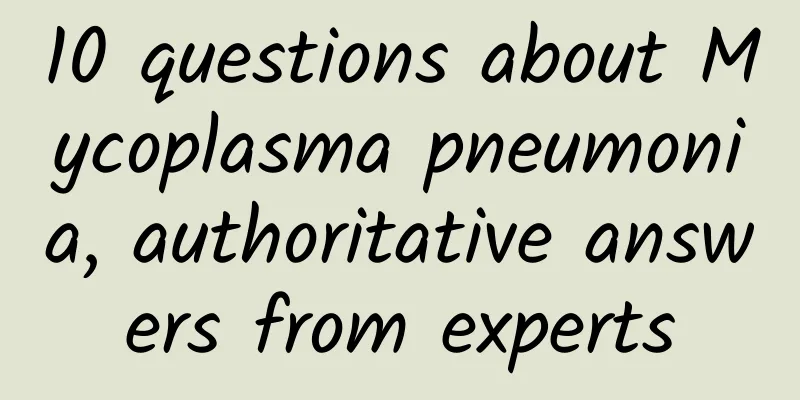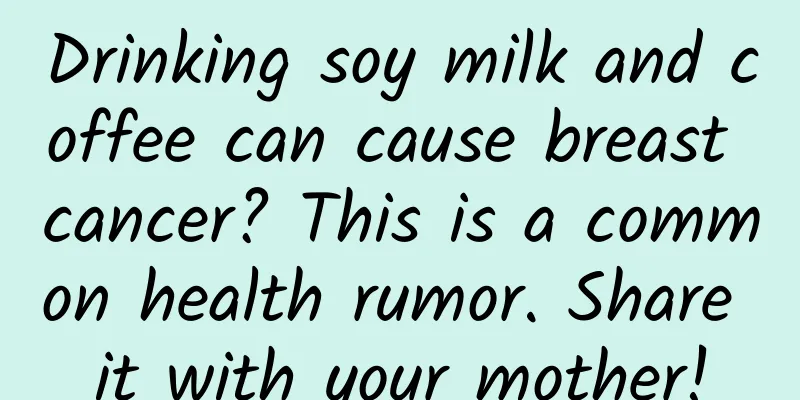10 questions about Mycoplasma pneumonia, authoritative answers from experts

|
Recently, mycoplasma pneumonia has become prevalent. What are its main symptoms? In what cases should you seek medical attention in a timely manner? How can you provide good home care? How can parents identify severe cases as early as possible? Well-known experts in respiratory medicine at Beijing Children's Hospital, National Children's Medical Center, answer common questions about mycoplasma pneumonia. What is Mycoplasma pneumonia? What are the main symptoms? Let's first learn about mycoplasma. It is a microorganism between viruses and bacteria and is a common pathogen in nature. Mycoplasma pneumoniae is one of them. Infection with Mycoplasma pneumoniae does not necessarily cause pneumonia. Mycoplasma pneumonia can only occur when Mycoplasma pneumoniae invades our lower respiratory tract. The most typical symptoms of Mycoplasma pneumonia in children are fever and cough. The cough has certain characteristics. In the early stage, it is a paroxysmal, irritating dry cough. As the disease progresses, sputum will appear. Some children with severe symptoms will experience wheezing, difficulty breathing, cyanosis, etc. Children should be highly vigilant and seek medical attention as soon as possible. In what situations do children need to seek medical attention promptly? There have been many types of respiratory infections recently. If a child has a fever for three days, the temperature does not improve or the condition recurs, there is an obvious cough, increased respiratory rate, or accompanied by wheezing, difficulty breathing, cyanosis, headache, nausea, vomiting, diarrhea, rash, poor spirits, convulsions, etc., seek medical attention promptly. Does a positive mycoplasma antibody mean that I am infected with mycoplasma pneumonia? A positive mycoplasma antibody only indicates a mycoplasma infection, but it is not necessarily a recent infection, because mycoplasma antibodies exist for a long time after mycoplasma infection. Whether or not a person is infected with mycoplasma pneumonia should be determined in combination with clinical manifestations. In addition to mycoplasma antibodies, mycoplasma nucleic acid tests can also be performed on throat swabs and nasopharyngeal swabs. Relatively speaking, mycoplasma RNA testing has better specificity and can reflect recent mycoplasma infections, but whether or not it is mycoplasma pneumonia also requires doctors to make a comprehensive judgment based on clinical manifestations. In addition, in addition to mycoplasma, there are many children with viral infections recently, which also require doctors to distinguish them when diagnosing. What are the main drugs for the treatment of Mycoplasma pneumonia? The first-line treatment for mycoplasma pneumonia is macrolide antibiotics, including azithromycin, erythromycin, clarithromycin, etc. Penicillin and cephalosporin antibiotics are ineffective in treating mycoplasma pneumonia. Most mycoplasma pneumonia is effective against macrolide antibiotics. Tetracyclines, such as doxycycline and minocycline, can be used for children over 8 years old who are ineffective against macrolides. Parents must use medication under the guidance of a professional doctor and do not give antibiotics to their children on their own. Will Mycoplasma pneumonia cause “white lung”? Some children with mycoplasma pneumonia have a white area on the lung images, which is mostly caused by infection of one lobe or one segment, mainly due to airway obstruction or inflammatory exudation in the lungs, but most of the other lobes are normal, which is different from the "white lung" in medicine. Through methods such as patting the back to expectorate, expectorant drugs, and bronchoscopic treatment, children can be cured in a relatively short period of time and basically will not cause life-threatening danger. Generally speaking, "white lung" refers to acute respiratory distress syndrome, which mainly occurs in severe infections, with diffuse lesions in both lungs and rapid progression. Its symptoms and severity are different from mycoplasma pneumonia. How long is the general course of Mycoplasma pneumonia? The course of mycoplasma pneumonia is related to the severity of the disease. Generally, mild pneumonia has a shorter course, while severe pneumonia has a longer course. The course of mycoplasma pneumonia is generally 2 to 4 weeks. It is critical to identify and seek medical treatment in a timely manner. The course of severe patients is generally 3 to 4 weeks, with normal body temperature, coughing and expectoration for a period of time, and some may experience wheezing. A very small number of children may be at risk of sequelae such as atelectasis and obliterative bronchiolitis. How do parents identify severe Mycoplasma pneumonia? It is very important to detect severe and critical cases early to avoid serious consequences such as sequelae. If parents find that their children have any of the following conditions, they need to be highly vigilant and seek medical attention in time. Persistent high fever (above 39°C) for ≥5 days or fever for ≥7 days, with no downward trend in the peak temperature. One of the following symptoms occurs: wheezing, shortness of breath, difficulty breathing, chest pain, hemoptysis, etc. Poor spirits, headaches, convulsions, frequent vomiting, inability to eat, etc. If a child is diagnosed with Mycoplasma pneumonia, how can we provide good home care? Mild cases of mycoplasma pneumonia do not require hospitalization. The following points are recommended for home care: Ensure adequate rest and energy intake, and ensure water and electrolyte balance. It is not recommended that children who are infected or have symptoms such as fever, sore throat, runny nose, cough, etc. go to school while sick. Correct use of antipyretics: For children over six months old, you can choose ibuprofen (6-8 hours apart) or acetaminophen (4-6 hours apart). You can choose one of the two, no more than four times a day. However, you cannot take two antipyretics at the same time, and alternating them is not recommended. For children over two months old and under six months old, only acetaminophen can be used. Antitussive drugs are not routinely recommended. If the dry cough significantly affects the child's rest, it can be used as appropriate. Expectorants can be used, including oral and nebulized drugs, or percussion can be used to help children expel sputum. Pay attention to ventilation and keep the room clean. Children with allergies or family history of allergies should avoid contact with tobacco, pets, flowers, etc. Families with many children who have the conditions should isolate themselves from each other to prevent cross-infection. Is Mycoplasma pneumonia contagious? How does it spread among people? It is contagious, and people are generally susceptible to Mycoplasma pneumonia. In my country, Mycoplasma pneumonia is one of the most common community-acquired pneumonias in children aged 5 and above, and is a common respiratory infection. In recent years, the proportion of young children has increased, and infections have also occurred in infants under 3 years old. Mycoplasma pneumoniae is mainly transmitted through respiratory droplets. The pathogen can be carried in secretions from coughing, sneezing, and runny nose. Patients infected with Mycoplasma pneumoniae and asymptomatic carriers are the main sources of infection. The incubation period of the disease is 1 to 3 weeks, and the disease is contagious during the incubation period until the symptoms are relieved for several weeks. Can Mycoplasma pneumonia be prevented? How to do it? Although there is currently no vaccine to prevent Mycoplasma pneumonia, developing good hygiene habits is important to avoid infection. Avoid crowded and poorly ventilated public places, and wear a mask when necessary. Cover your mouth and nose with a tissue when you cough or sneeze, and throw the used tissue into the trash can. Keep your hands clean and wash them frequently with soap or hand sanitizer under running water. Pay attention to indoor ventilation, and ventilate for at least 30 minutes each time to keep the air fresh. Keep hygiene good, wash bed sheets and quilts regularly, and dry them in the sun. Eat a balanced diet, get enough sleep, strengthen physical exercise, enhance physical fitness and improve resistance. Schools, kindergartens and other places should ensure proper ventilation and disinfection to avoid clustered infections. During the high incidence season of mycoplasma pneumonia, children with eczema, rhinitis, or a family history of allergies or underlying diseases should take better precautions. After children with allergies or a family history of allergies are infected with mycoplasma, their airway damage is more serious than that of ordinary children. The airway secretions may be more numerous and more viscous, which makes it more difficult for children to cough them out by themselves. They are more likely to have airway obstruction and the lesions in the lungs progress faster. Source: Beijing Children's Hospital Service Account |
>>: Whole grains are nutritious and give your child a bowl of staple food that doubles their health
Recommend
The fastest sign of a woman's pregnancy
For married couples, in order to have a healthy a...
What is the disease of women's body pain
Nowadays, the pace of life is very fast, so some ...
The DASH diet is a good choice for people who are looking to lower their blood pressure.
Author: Chen Zhou, attending physician at Shangha...
Relieve nasal congestion and runny nose. Different colors represent health problems!
Runny noses occur when the weather is cold, when ...
What causes gynecological diseases in women?
Women often suffer from gynecological diseases, s...
The woman had difficulty conceiving and maintaining the fetus, and was told that she needed surgery when she was 5 months pregnant. Be sure to be careful about this disease!
Ms. Li, 40, has always wanted a child of her own....
Diagnostic criteria for PCOS
PCOS, polycystic ovary syndrome, is a common endo...
Is 0.7 normal for endometrium?
As we age, the physical differences between men a...
Women's buttocks are big, round and perky
The perfect butt is the dream of all women. A fla...
Pregnant woman vomiting to determine the gender
Pregnancy reaction refers to some adverse symptom...
Why is tubal infertility
The phenomenon of female infertility has become p...
Why do nipples suddenly itch?
There may be many reasons that can cause female f...
What are the contraindications of taking Chinese medicine for regulating menstruation?
Nowadays, the pace of social life is accelerating...
Is the recanalization surgery painful for women?
Recanalization surgery generally refers to bilate...
How often should girls wash their hair?
Apart from clothing, the most important thing for...









